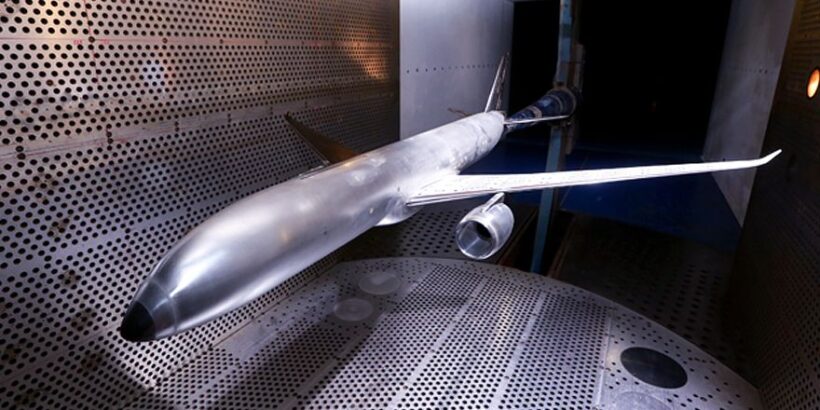The United Aircraft Corporation (UAC) has patented the design of a wide-body long-range commercial airliner intended for passenger, baggage, and additional cargo transport on scheduled routes of up to 8,450 nautical miles (13,600 km), including transoceanic and remote-area operations. This information is based on the patent description cited by TASS.
The baseline configuration accommodates 281 passengers in a three-class layout. The family includes a shortened variant with 240 seats and a stretched version offering up to 320 seats. The series comprises three models: WBLA-500 (236 seats), WBLA-600 (281 seats), and WBLA-700 (320 seats).
Operating costs for the new airliner are projected to be lower than those of the Boeing 787-9—by 3% per flight in direct operating costs and approximately 6% in total direct costs. The design also achieves significant reductions in seat-mile and direct costs. Extensive use of polymer composite materials (PCMs) improves both technical and operational performance.
At first glance, patenting an aircraft design similar to existing models may seem redundant. However, such an assessment overlooks the strategic context. Developing a wide-body long-range airliner in Russia reflects UAC’s drive for technological independence in the domestic aerospace sector. Following its withdrawal from the joint CR929 project with China in 2023, UAC refocused its resources on an indigenous long-haul platform positioned to compete directly with the Boeing 787-9. In the context of import restrictions and sanctions, developing a homegrown platform is crucial for maintaining uninterrupted long-haul air service on both international and domestic routes.
Currently, Russian civil aviation relies exclusively on foreign-built wide-body aircraft. The Ilyushin Il-96 is outdated and fails to meet current standards for fuel efficiency, noise, and operational costs. Consequently, airlines phased out the Il-96 in the early 2000s, replacing it with foreign models. The UAC patent addresses the strategic need to modernize Russia’s long-haul fleet using domestic technologies and manufacturing capabilities.
The WBLA design leverages advanced composites to reduce airframe weight and improve fuel efficiency. Its seat-mile and per-flight economics are claimed to surpass those of the Boeing 787-9, offering airlines a more cost-effective option for operations.
This aircraft family offers flexible cabin configurations to suit diverse airline business models. In addition to the standard passenger variant, cargo and combi (passenger/cargo) versions are planned, broadening its operational scope. Enhanced efficiency results not only from advanced materials, but also from optimized aerodynamics and the use of new engines compliant with ICAO emissions and noise standards.
The patented WBLA differs from the CR929 not only in national origin but also in engineering philosophy. While the CR929 prioritizes maximum capacity and range, the Russian design focuses on adaptability to Russian and CIS operating conditions and reducing reliance on imported components. Engineering solutions are tailored to local manufacturing capabilities and climatic conditions, minimizing risks associated with imports and maintenance.
Patent protection for the WBLA secures a suite of technical solutions—including aerodynamic profiles, composite structural elements, and integrated digital control systems. This legal framework safeguards domestic engineering innovations and prevents competitors from copying key components and technologies. Such protection facilitates investment, enables government support, and strengthens UAC’s position in international markets.
The project features a high-aspect-ratio wing with scimitar wingtips (“saberlets”) to reduce induced drag and enhance cruise efficiency—a technology already in use on the SJ-100 regional jet. The extensive use of carbon fiber composites achieves high strength with low weight. To accelerate testing and implementation, the entire development process is managed digitally using advanced “digital twin” technology.
Compared to international counterparts such as the Airbus A330, A350, Boeing 787, and 777, the WBLA adopts similar aerodynamic and composite concepts, but is uniquely tailored for Russian climatic conditions and airport infrastructure. Independence from global supply chains reduces risks associated with sanctions and limitations on manufacturing and maintenance.
By applying advanced engineering, securing patent protection, and focusing on national standards, the WBLA project delivers strategic advantages in an environment of restricted access to foreign technologies. The initiative expands Russia’s expertise in composites, digital engineering, and next-generation aircraft development. This new airliner lays the foundation for a new era in Russian civil aviation, ensuring technological autonomy and international competitiveness for the industry.


